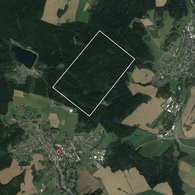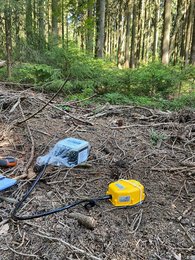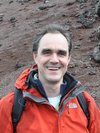Ambient seismic noise tomography is a novel, low-impact method to investigate the Earth's structure. While most passive seismic studies focus on structures at crustal scales, there are only few examples of this technique being applied in a mineral exploration context. In this study, we performed an ambient seismic experiment to ascertain the relationship between the shallow shear wave velocity and mineralized zones in the Erzgebirge in Germany, one of the most important metal provinces in Europe. Based on ambient noise data from a dense "LARGE-N" network comprising 400 low-power, short-period seismic stations, we applied an innovative tomographic inversion technique based on Bayesian statistics (transdimensional, hierarchical Monte Carlo search with Markov Chains using a Metropolis/Hastings sampler) to derive a three-dimensional shear wave velocity model. An auxiliary 3D airborne time-domain electromagnetic dataset is used to provide additional insight into the subsurface architecture of the area.
Time frame
- 2020/2021
Funding
- GFZ
Principal Investigators
- Dr. Christian Haberland (GFZ)
- Dr. Trond Ryberg (GFZ)
Personnel
- Dr. Christian Haberland (GFZ)
- Dr. Trond Ryberg (GFZ)
Cooperations
- Helmholtz-Zentrum Dresden-Rossendorf (HZDR)
- Helmholtz-Institut Freiberg für Ressourcentechnologie (HIF)
- Aarhus Geophysics, Denmark
Methods & Equipment
- Passive Seismik, Ambient seismic noise, GIPP
Publications/Results
- Ryberg, T., Kirsch, M., Haberland, C., Tolosana-Delgado, R., Viezzoli, A., Gloaguen, R. (2022): Ambient seismic noise analysis of LARGE-N data for mineral exploration in the Central Erzgebirge, Germany. - Solid Earth, 13, 3, 519-533.
https://doi.org/10.5194/se-13-519-2022




